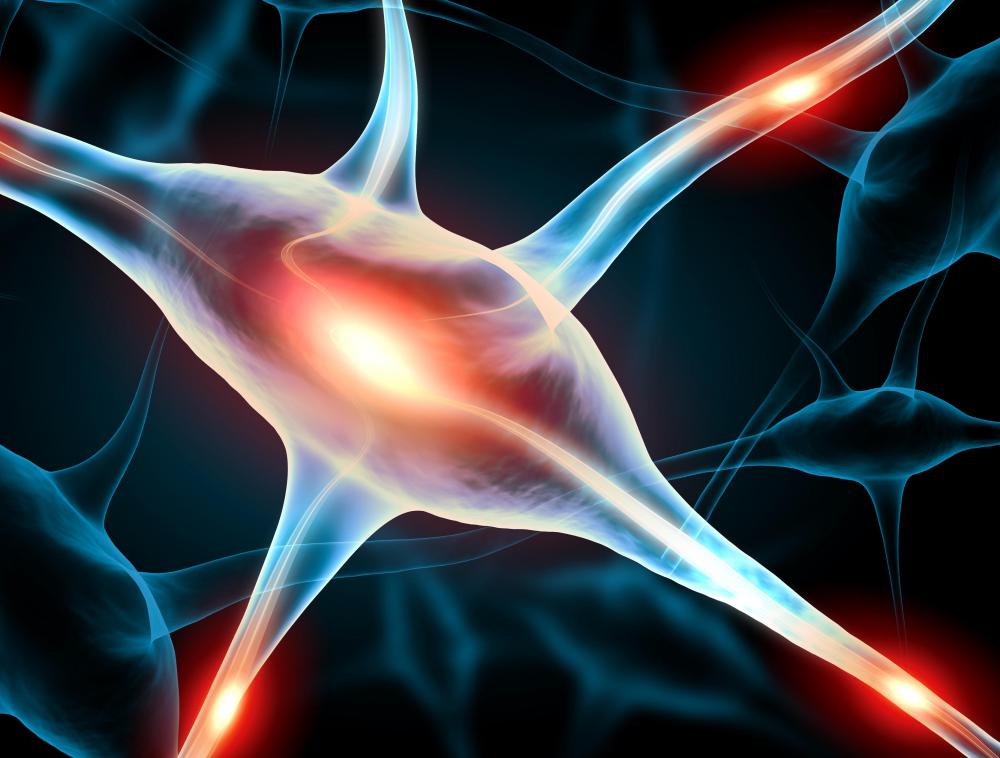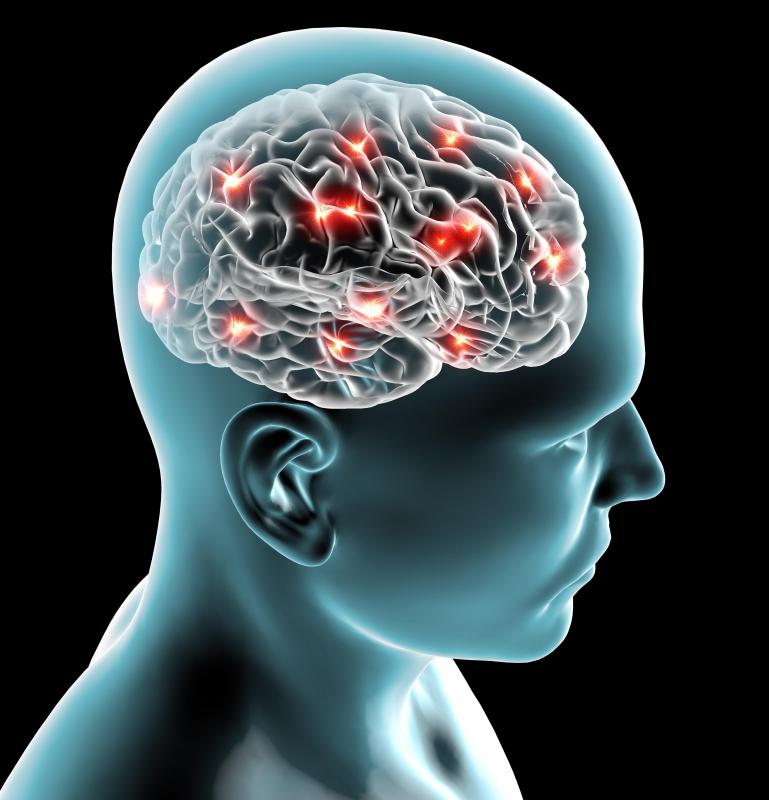At TheHealthBoard, we're committed to delivering accurate, trustworthy information. Our expert-authored content is rigorously fact-checked and sourced from credible authorities. Discover how we uphold the highest standards in providing you with reliable knowledge.
What is the Function of a Motor Neuron?
The function of a motor neuron is to carry an electrical signal to a muscle, triggering it to either contract or relax. In vertebrate animals, including humans, movement of the articulated internal skeletal structure is enabled by coordinating the contractions of the many muscles attached to it. Only the brain is capable of this complex coordination, and electrical signaling is arguably the only means fast enough to deliver its instructions to far flung muscles. The medium of delivery are electrically excitable cells called neurons.
A motor neuron, sometimes combined into the singular term motoneuron, is a nerve cell. Its basic structure includes a receptor on one end and a transmitter on the other, connected by an elongated body called the axon, some of which can be 39 inches (1m) long in humans. Chains of nerve cells, end to end, are bundled into nerve fibers which reach from the brain to the finger muscles and further.

The human nervous system is comprised of a branching network of nerve fibers permeating throughout the body and the central nervous system, namely the brain and spinal cord. All are made of various specialized neurons. A motor neuron is defined by its efferent function: it carries signals away from the central nervous system. In contrast, afferent nerves carrying signals toward the spinal cord and brain are called sensory neurons. Not all motor movement is commanded and controlled by the brain; the automatic knee jerk reflex, for example, originates from the spinal cord to the thigh muscles.

It is also worth noting that there are other types of muscles besides the long, striated bundles attached to the skeleton. The cardiac muscles of the heart are specialized to rhythmically contract. Smooth muscles, such as those that propel food through the digestive tract, are specialized to uniformly contract according to their various shapes, like sphincters and tubes. While these are largely involuntary muscular activities, they are nevertheless under the brain’s regulatory command, which is sent via motor neurons. Those that control voluntary skeletal muscles are called somatic; cardiac and smooth muscles are controlled by motor neurons called visceral.

Humans can’t be recharged with an AC electrical wall outlet, so the task of a motor neuron is to create electricity and to transmit the charge to the next neuron, and the next, until the terminal neuron discharges the electricity to muscle tissue. This is achieved through chemical signaling. At its receptor end, and to a lesser degree its transmission end, the nerve cell extends a web of filaments called dendrites that make contact with adjoining neurons. Their cellular membranes have molecular channels through which a comparison of the intracellular versus extracellular concentrations of ionic, or charged, elements including potassium, are made. When the difference reaches a tipping point, the cell generates an electrical pulse called an action potential that speeds down its axon and activates its terminal dendrites.

The electrical stimulation of dendrites releases a chemical neurotransmitter called acetylcholine that bridges the microscopic gap between the two connected neurons, as well as the gap between a nerve cell and a muscle cell. The class of compounds called noradrenaline is another known neurotransmitter. In effect, these compounds open the ion channels that enable a cell to gauge charge differential and decide whether to fire its own electrical pulse further down the nervous system. Skeletal muscle cells are tipped at the end with acetylcholine receptors whose positive activation induces the cell’s respiratory contraction.
The function of a motor neuron is perfectly suited to the function of muscles. The electrical signal they transmit is either positive or negative. Muscles also have a binary state — contract or relax.
AS FEATURED ON:
AS FEATURED ON:














Discussion Comments
I just found it interesting that this study focused on worms, which I don’t feel like studies do enough. I feel like most studies I read about focus on rodents for more obvious reasons (similar neurological components to humans, etc). Has anyone found any other scientific studies linking worms and humans? I just find the concept completely fascinating!
Post your comments